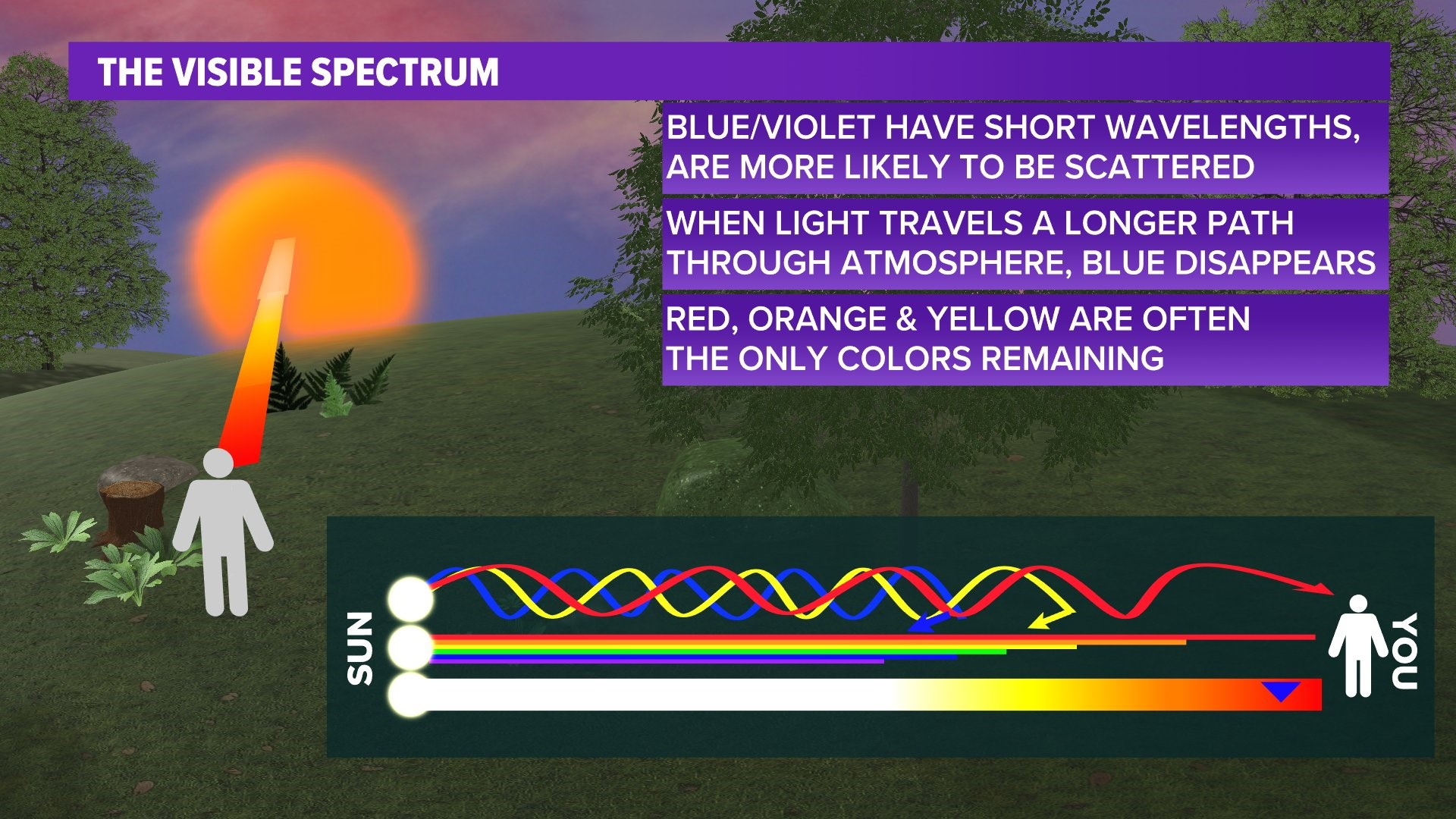DES MOINES, Iowa — Ever think about how stunning our sunrises and sunsets are here in Iowa?
It could be argued they're some of the most beautiful anywhere in the United States.
No matter the season, we can see bright shades of pink, orange, red, and yellow at both dawn and dusk.
Although it is certainly fun to just admire their beauty, there's actually some fascinating science to explain why the sunrises and sunsets are so colorful.
It all has to do with the visible light spectrum.
The sun emits electromagnetic energy at a wide range of frequencies.
Only a small portion of that energy, however, can be seen by the human eye.
The visible spectrum is made up of all the colors of the rainbow, and each color has a different wavelength.
Colors like violet and blue have shorter wavelengths, and are more likely to be scattered in all directions by the gases that make up Earth's atmosphere.
This explains, quite simply, why the sky is blue.
The sky's blue hue occurs during the middle of the day when light travels a shorter distance through the atmosphere.
On the other hand, light has to travel a much farther distance through the atmosphere before it reaches our eyes at both sunrise and sunset.
That longer path typically causes the blue color to disappear, but colors with longer wavelengths - like reds, oranges, and yellows - stick around.
Sunrise and sunset photos are beautiful and the Local 5 weather team always welcomes them!
To send your photo to Local 5's team of meteorologists, just download the free We Are Iowa app and upload them there.
Download the We Are Iowa app or subscribe to Local 5's "5 Things to Know" email newsletter to get the latest weather forecast

